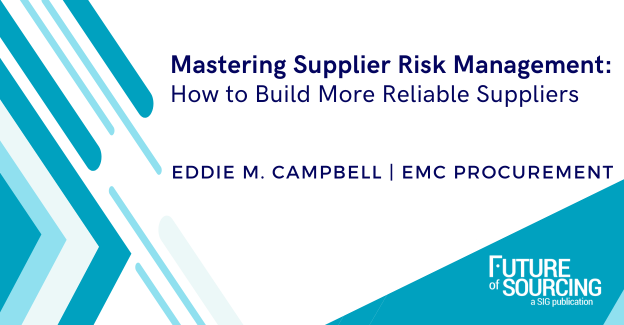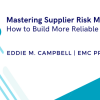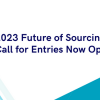In the intricate business world, managing supplier risk is critical to ensuring smooth operations and protecting the bottom line. A robust Supplier Risk Management (SRM) program can help businesses mitigate potential risks and build stronger, more reliable relationships with suppliers. This article will delve into the three main components of an effective SRM program: Supplier Segmentation, Supplier Qualification, and Ongoing Compliance Monitoring.
Supplier Segmentation
The first step in an SRM program is Supplier Segmentation. This process involves categorizing the supply base into different segments based on various factors, such as the type of goods or services provided, the business volume, and the risk associated with each supplier. By segmenting suppliers, businesses can prioritize their efforts and resources to effectively manage the suppliers that pose the most significant risks.
For a utility company, we segmented the supply base to identify high-risk and critical suppliers for the initial focus of the SRM program. With over 1,000 suppliers, we had to find a way to maximize the ROI by addressing our most significant risks. We first limited the scope to the 800+ suppliers with at least $5K in spend. Then, we worked with a cross-functional team, including stakeholders from each business area, to identify the highest-risk services and suppliers critical to the operation. Each company should use discretion to define the appropriate segmentation methodology and criteria.
Supplier Qualification
After the suppliers have been segmented, the next step is Supplier Qualification. This process involves thoroughly vetting each supplier to ensure they meet the business's specific requirements before they are allowed to perform any work. For instance, qualification requirements could include elements like ensuring suppliers have valid licensing and are financially healthy. This step is crucial in preventing potential risks that could arise from working with unqualified suppliers.
High-risk suppliers are determined by the nature of the work performed. Generally, high-risk work has at least one of the following characteristics: there is a reasonable potential for bodily injury, significant damage to company assets, or negatively impacting the general public or environment. Because of the potential for serious harm, the qualification process for high-risk suppliers should have additional safety requirements and/or thresholds. For example, a qualification requirement for both a medium- risk and high-risk supplier may include evaluating each company’s DART rate; however, the threshold for qualification could differ (i.e., 1.5 vs. 1.8 average rate), holding high-risk suppliers to the highest safety standards.
Procurement has the best purview to oversee the qualification process once there is an established list of requirements and thresholds for determining if a supplier is qualified. The requirements should be specific to the risk level and size of the supplier. A detailed variance approval process will be necessary for suppliers not meeting the established thresholds.
Ongoing Monitoring
The final component of an SRM program is Ongoing Monitoring. This involves regularly monitoring the performance of suppliers and supplier information to ensure they continue to remain compliant with the established requirements. Regular evaluations of specific suppliers should be conducted at defined intervals and on an ad-hoc basis. This continuous monitoring allows businesses to identify issues early and take corrective action before they escalate into significant problems. This is where having the right enablers becomes critical for sustainability and efficiency..
A sustainable and efficient program can be achieved by combining robust, user-friendly software with outsourced services like data collection. While some requirements, like certifications, are valid until expiration, others, like safety metrics, must be collected and reviewed regularly. Having a Supplier Information Management (SIM) software or a Third-Party Risk Management (TPRM) partner is crucial to automate or outsource the time-consuming tasks of collecting data and identifying non-compliance, enabling procurement to focus on strategic tasks, like supplier development and corrective actions.
Finding a Third-Party Risk Management (TPRM) Partner
We cast a wide net to find the right partner or combination of partners, evaluating over 40 software suppliers, data sources, and qualification services companies. We focused on best-of-breed and emerging solutions.
Eventually, two solution options emerged.
1. Implement a SIM software or a combination of software and data sources (e.g., D&B,
Experian, etc.) and internally manage the program.
2. Leverage a full-service TPRM provider offering a software platform while allowing the client to
outsource information collection, validation, and supplier evaluation services.
There are pros and cons to each option. While the self-managed option offers more autonomy and a lower long-term TCO, the longer path to implementation and resource requirement to manage led us in a different direction for the client.
Once we decided on a solution model, we sent our detailed service requirements to the TPRM providers that fit the required profile. Ultimately, the client chose a solution that most closely matched our requirements and offered the most competitive cost model.
Conclusion
In conclusion, a comprehensive SRM program that includes Supplier Segmentation, Supplier Qualification, and Ongoing Compliance Monitoring is essential for any business looking to mitigate supplier risk. By implementing such a program, companies can ensure they work with reliable suppliers, thereby protecting their operations and bottom line.
Region:









